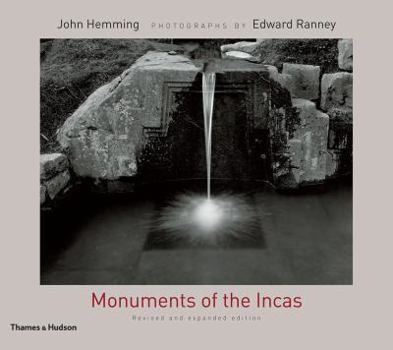Monuments of the Incas
Select Format
Select Condition 
Book Overview
The stone monuments of the Incas, set against the dramatic backdrop of the Andes, are among the most magnificent structures in the world. Originally published in 1982, Monuments of the Incas is the most comprehensive photographic and narrative study of the major sites of the Inca empire, including the famed city of Machu Picchu, the Inca town and sun temple of Ollantaytambo, the mighty temple-fortress of Sacsahuaman, and the steeply terraced ruins of Pisac.
This classic book, long out of print, has now been rewritten to incorporate results from the latest archaeological excavations, discoveries about Inca masonry techniques, and updated interpretations of form and function. There are new chapters about Choquequirau, Vitcos, Chinchero, and the ruins along the famous Inca Trail.
Edward Ranney's photographs convey the extraordinary accomplishments of the Inca masons--from sheer terrace walls and stairways to striking temple buildings and sculpted rock shrines--and the grandeur of their cities. John Hemming makes brilliant use of archaeological and documentary evidence to write a compelling account of each site and to offer insights and speculations on the enigmatic ruins.
This classic book, long out of print, has now been rewritten to incorporate results from the latest archaeological excavations, discoveries about Inca masonry techniques, and updated interpretations of form and function. There are new chapters about Choquequirau, Vitcos, Chinchero, and the ruins along the famous Inca Trail.
Edward Ranney's photographs convey the extraordinary accomplishments of the Inca masons--from sheer terrace walls and stairways to striking temple buildings and sculpted rock shrines--and the grandeur of their cities. John Hemming makes brilliant use of archaeological and documentary evidence to write a compelling account of each site and to offer insights and speculations on the enigmatic ruins.
Format:Hardcover
Language:English
ISBN:0500051631
ISBN13:9780500051634
Release Date:March 2010
Publisher:Thames & Hudson
Length:288 Pages
Weight:3.50 lbs.
Dimensions:1.2" x 10.7" x 9.6"
Customer Reviews
1 rating
A Valuable Book for Various Reasons
Published by Thriftbooks.com User , 17 years ago
Consider the following: --In the 1990s, my mother was an Earthwatch volunteer on three different Incan projects. On the recommended reading list for each was this book. --In 2006, my Peruvian guide said she had been tempted to give me a nudge as I leaned over a Machu Picchu guardrail to snap a picture. "Hand me this book again only when we're on flat ground," she advised, only partly in jest. --In the two years I've been tracking it, rarely have I seen a used copy of the paperback for under $65. Anyone who tries to find in-depth information about most of the 14 monuments covered in this book--originally published in 1982, reprinted in 1990--will quickly discover why it is still so sought after. (See the first comment for brief descriptions of the 14.) Nor does one have to get too far into the text for other reasons to become immediately apparent, for included in each chapter are descriptions of the site/monument and the specifics about its construction that are so clear that I do not even have to look at the photographs to recall all I saw. Equally well explained is what is known/unknown as well as theories now discredited. What makes this book so special, however, is the historical background Hemming weaves into his discussion of each site/monument, for it includes an avalanche of detail not found in guidebooks. Until I read this book, for example, I had not understood why flooding the plain at Ollantaytambo had helped repel the Spanish, for I'd never imagined that "the Spanish horsemen found themselves trying to maneuver in rising water that eventually reached the horses' girths." Likewise, neither my guide nor guidebooks mentioned that the condors on the coat of arms of the city of Cuzco were there "in memory of the fact that when [Sacsahuaman] was finally taken [by the Spaniards], these birds descended to eat the natives who had died in it." Also skillfully woven throughout the entire text are the observations a) of those who were among the first Europeans to see the Incan works and talk to the Indians who remembered them being built, b) of 19th century adventurers who came upon them and c) of archaeologists who have studied them. For instance, on record is the anger at the wanton destruction of Cuzco that 16th century soldier-chronicler Cieza de Leon expressed: "The Spaniards have already done so much damage and left it in such a state that I hate to think of the responsibility of those governors who allowed so extraordinary thing to have been destroyed and cast down without giving a thought to the future....The remains of this fortress...should be preserved in memory of the greatness of this land!" Equally interesting is the 53-page introduction to Inca architecture, for it, too, is written as a narrative that weaves in history, religious beliefs, and observations. Naturally much space is devoted to the "technically and aesthetically astounding" stonework. Yet explained as well are the other types of wall construction, th





